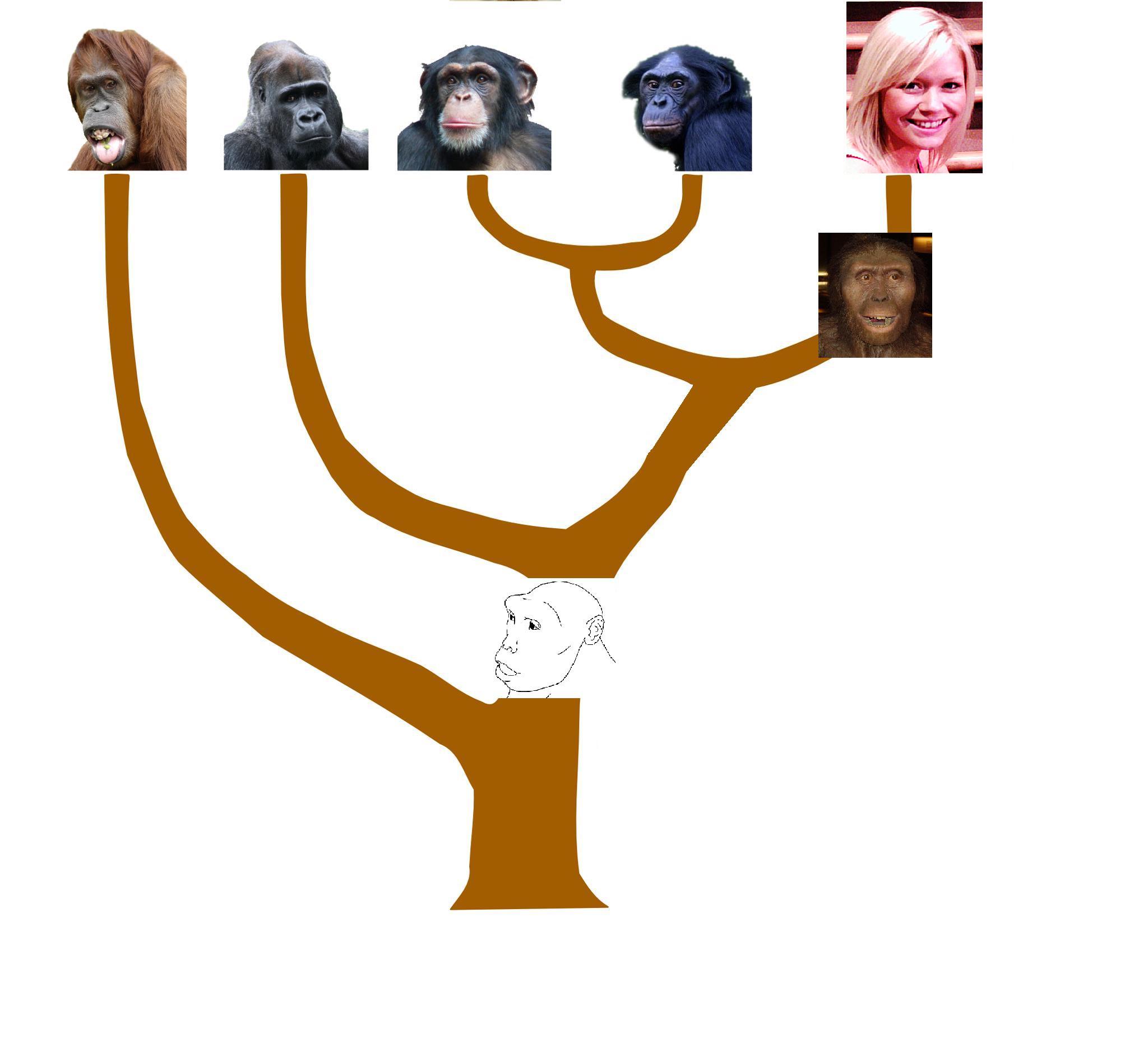Evolutionary biologists often face the question: “If humans evolved from monkeys, why are there still monkeys?” Alternatively, one might question why the world doesn’t have any half-chimp, half-humans that show the transition from primitive apes to Homo sapiens? However, these questions are loaded with a bunch of presumptions and misconceptions about how evolution works.
The key is understanding evolution is not linear. That well-known drawing of a hunched-over chimp next to an upright ape, followed by a spear-carrying human is a very misleading way to view the situation.
A better way to think of evolution – specifically human evolution – is that we are cousins of chimpanzees and other great apes, not the direct child.
On the Tree of Life, our branch has been separated from chimps for millions of years – we didn’t evolve directly from chimps down a linear path nor any other great ape or monkey that’s alive today.
Instead, humans and chimps both evolved from a common ancestor that lived around 6 to 7 million years ago. This now-extinct ancestor slowly evolved over time in response to different pressures and eventually gave rise to the two species we define as Homo sapiens and chimpanzees.
Unfortunately, conclusive physical remains of the definitive last common ancestor have never been unearthed as the fossil record is patchy (that goes for all life on Earth). However, we know it existed, as humans and chimps share a surprising 98.8 percent of their DNA.
These two branches – human and chimp – are more like sub-branches both connected to another branch from which sprouts other sub-branches signifying the other great apes, aka hominids, like bonobos, gorillas, and orangutans. At the base of this branch, we can find another common ancestor that links us to the rest of the ape family (image below).
The tree of life consists of branch branches splintering off from eachother.
If we zoom out even further on this picture of a family tree, we find the ape branch eventually meets another separate branch, which signifies the common ancestor with monkeys. The split between great apes and monkeys branches even further back, some 25 million to 30 million years ago. Once again, over millions of years, the extinct common ancestor at the base of the branch evolved to give rise to an array of different species.
If you’re still a bit confused, another useful way to tackle the question is this:
“It is no more correct that humans descended from apes and that apes descended from monkeys than that you descended from your siblings who in turn descended from your cousins. No one would ask, ‘If you evolved from your cousin, why is your cousin still here?’ The question ‘if humans evolved from monkeys, why are there still monkeys?’ is equally absurd to an evolutionary biologist,” William Eric Meikle and Eugenie C. Scott wrote in a 2010 paper published in the journal Evolution: Education and Outreach.
It can be a fiddly idea to get your head around, let alone explain with words, but it’s easier to demonstrate through illustrations that show how these branches separate from one another, such as the one above.
All “explainer” articles are confirmed by fact checkers to be correct at time of publishing. Text, images, and links may be edited, removed, or added to at a later date to keep information current.
Source Link: If Evolution Is Real, Why Are There Still Monkeys Around Today?
